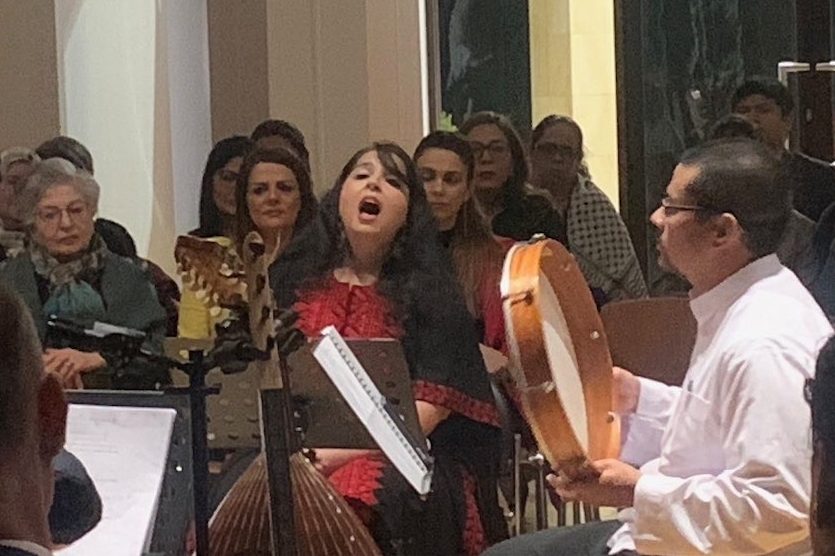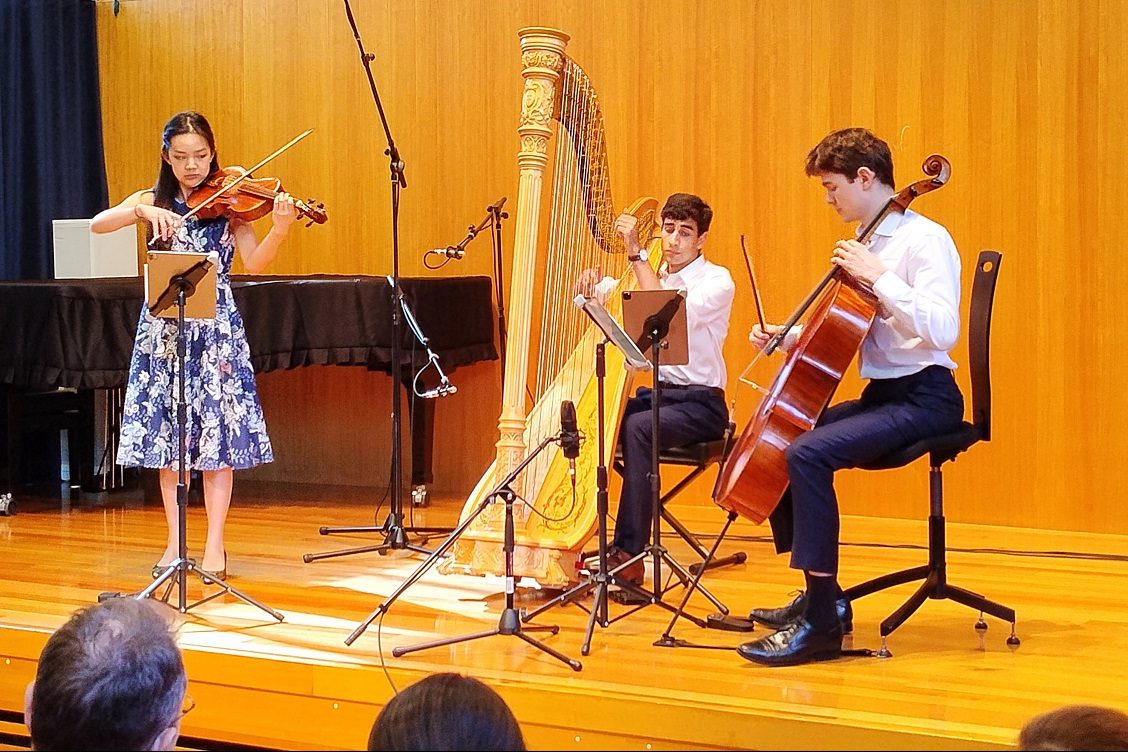MAKING its Australian debut, Ensemble Romantico is a group of four young South Korean musicians led by pianist, Ju-Hae Chang, a university teacher in Korea, and violinist, Hanna Yu. Yu currently is a member of the ANU Open School of Music and plays with the Canberra Symphony Orchestra. At the other end of the spectrum, she will tour Australia and NZ later this year with the English-American rock band, Foreigner.
The other members are violinist, Nahyun Kim, currently teaching in Korea, and violist, Daniel Hanul Lee, a member of the Trondheim Symphony Orchestra, in Norway, and a founding member of Roads to You, a band that crosses between classical and Arabic music.
The wide-ranging program began with “Five Pieces for Two Violins and Piano”, by Russian composer, Dmitri Shostakovich. It’s something of a grab-bag of pieces from other works of his, drawn together in a quite attractive suite. There’s a prelude, gavotte, elegy, waltz, and a lively polka to round it off.
Although Chang and the two violinists gave the work a pleasant interpretation, especially in the three dance pieces, the piano, with the lid only just open, sounded subdued, with Chang very much playing an accompanist role, rather than being integral to the trio’s performance.
This was not so much the case in the Australian premiere of “Dirge for Violin and Piano”, by contemporary Korean composer, Hyo-Shin Na. “Dirge” is perhaps an unfortunate title for this very interesting piece, founded on a single “drone” note at “A”, played on the violin, and based on “Sanyombul”, a Korean folk song. The optimism of its words, “The sun that sets will rise again tomorrow”, is suggested in the opening and closing, with the more melancholic middle section reflective of “A life that passes will never return”.
Chang and Yu combined beautifully in this piece, drawing out the abstract but very evocative themes so close to their culture.
The two remained on stage for Elena Kats-Chernin’s very charming and popular “Eliza’s Aria” from her “Wild Swans” ballet, with the violin taking up the wordless part normally for soprano. Sadly, Chang returned to her rather passive accompanist role, with Yu missing the light, staccato elegance of the soprano notes, drawing rather too long a legato bow on many of them.
Opening the second half, violist, Daniel Lee, with Chang playing the piano reduction of the orchestral part, gave a fine performance of Max Bruch’s Op 85 “Romanze for Viola and Orchestra”. This was the highlight of the concert, with Lee giving a very thoughtful, expressive interpretation with some beautiful phrasing and rubato embellishments.
The closer was Dvo?ák’s “Terzetto in C”, Op. 74, written in 1887. A terzetto is a piece written for string trio – two violins and a viola. This performance lacked personality and passion, and there was not enough attention given to expression and phrasing with passages seeming to collide with one another. Nonetheless it was pleasant to hear one of the more unusual works in the chamber music repertoire.
Who can be trusted?
In a world of spin and confusion, there’s never been a more important time to support independent journalism in Canberra.
If you trust our work online and want to enforce the power of independent voices, I invite you to make a small contribution.
Every dollar of support is invested back into our journalism to help keep citynews.com.au strong and free.
Thank you,
Ian Meikle, editor




Leave a Reply